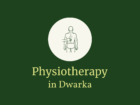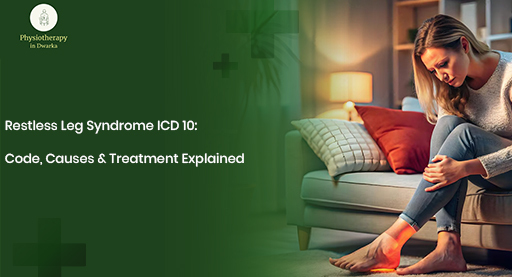Ever find yourself lying in bed, exhausted but unable to keep your legs still? Like they’ve got a mind of their own, twitching and tingling until you’re forced to pace the floor at 2 AM? If this rings a bell, you might be dealing with Restless Leg Syndrome also known in the medical world by its not-so-cozy title: Restless Leg Syndrome ICD 10: Code, Causes & Treatment Explained.
This weirdly frustrating condition doesn’t just mess with your sleep; it chips away at your daily peace, making relaxation feel like a battle. But hey, don’t throw in the towel just yet we’re diving deep into what it really is, what causes it, how it’s classified medically, and (the best part) how to naturally soothe your restless legs and get back to dreaming.
What Is Restless Leg Syndrome, Anyway?
Restless Leg Syndrome (RLS), or Willis-Ekbom Disease if you want to sound fancy at dinner parties, is a neurological condition that causes irresistible urges to move your legs. It typically strikes at night or during periods of inactivity, making it a real pain when you’re just trying to chill.
Restless Leg Syndrome ICD 10: Code, Causes & Treatment Explained
The Code That Cracks the Mystery
In medical records and insurance paperwork, RLS is categorized under the ICD-10 code G25.81. This little alphanumeric code is what helps doctors, researchers, and healthcare systems identify and track cases of Restless Leg Syndrome.
Knowing the ICD 10 code is handy if you’re navigating health insurance claims, filing for disability, or just trying to decode your doctor’s scribbles.
What Causes Restless Leg Syndrome?
Ah, the million-dollar question: Why does this even happen? Well, there isn’t a one-size-fits-all answer, but there are some usual suspects behind the scenes.
Common Culprits:
- Iron deficiency – Low iron levels mess with dopamine, a key player in muscle control.
- Genetics – RLS can run in families. Thanks, Grandma.
- Chronic diseases – Think kidney failure, diabetes, and peripheral neuropathy.
- Medications – Certain antidepressants and antihistamines can trigger symptoms.
- Pregnancy – Hormonal changes (and low iron) often bring on temporary RLS.
Spotting the Symptoms: Are Your Legs Trying to Tell You Something?
Still not sure if what you’re experiencing is RLS? Here’s how it usually shows up:
Tell-tale Signs:
- Uncontrollable urge to move legs – Especially when you’re lying down or sitting still.
- Creepy-crawly sensations – Tingling, itching, pulling, or buzzing.
- Relief with movement – Walking or stretching eases the feeling temporarily.
- Worse at night – Symptoms love to play hide-and-seek with your sleep.
- Sleep disruption – Constant waking and tossing and turning.
Diagnosis: How Do Doctors Know for Sure?
There’s no fancy test for RLS. It’s mostly based on what you tell your doctor. But they might:
- Run blood tests (to check iron and kidney function)
- Review your medications
- Ask about family history
- Rule out other conditions (like neuropathy or arthritis)
If your symptoms match the pattern and no other condition fits better, boom diagnosis.
Treatment Time! Conventional & Natural Paths to Relief
Here’s where things get juicy. Because while popping pills is an option, many folks are turning to natural methods that work with their body, not against it.
Conventional Treatments
- Dopaminergic drugs – Help regulate movement but may lose effectiveness over time.
- Anti-seizure meds – Calm nerve activity.
- Iron supplements – Especially if blood tests show you’re running low.
- Benzodiazepines – Help with sleep but can be addictive. Handle with care.
- Opioids – For severe cases only (and not ideal long-term).
Unlocking Natural Healing: Try These Remedies Instead
If the idea of medication makes you squirm, you’re not alone. Luckily, there are some tried-and-true natural approaches worth exploring:
1. Magnesium & Iron Supplements
- These minerals play a huge role in muscle and nerve function.
- But don’t self-prescribe, always check with your doc first.
2. Leg Massages
- Gentle pressure soothes those twitchy limbs.
- Bonus: Great excuse to visit a spa.
3. Warm Baths Before Bed
- Heat relaxes muscles and improves circulation.
- Add some Epsom salt for extra magnesium magic.
4. Stretching & Yoga
- Calms the nervous system and keeps muscles supple.
- Even 10 minutes a day can make a difference.
5. Limit Caffeine and Alcohol
- These sneaky triggers can make symptoms worse.
- Try a chamomile tea instead. Your legs will thank you.
6. Keep a Sleep Schedule
- Same bedtime. Every night. Yes, even on weekends.
- Your body loves consistency more than you’d think.
FAQs About Restless Leg Syndrome
What is the ICD-10 code for Restless Leg Syndrome?
The official ICD-10 code for RLS is G25.81, used in medical records and insurance documentation.
Is Restless Leg Syndrome a neurological disorder?
Yep. It involves the nervous system and affects the brain’s ability to regulate movement.
Can RLS be cured?
There’s no one-size-fits-all cure, but many people manage symptoms successfully through a mix of treatment, lifestyle changes, and natural remedies.
Does everyone with RLS need medication?
Not necessarily. Mild cases often respond well to natural strategies like stretching, diet tweaks, and good sleep hygiene.
Is RLS linked to other health conditions?
It can be. Conditions like kidney disease, iron deficiency, and diabetes are often connected to RLS symptoms.
Final Thoughts: You’ve Got This, Legs!
Dealing with Restless Leg Syndrome can feel like wrestling with a phantom unseen, frustrating, and downright exhausting. But once you understand the ins and outs, from the Restless Leg Syndrome ICD 10: Code, Causes & Treatment Explained to unlocking the healing potential of natural remedies, you’re no longer just reacting, you’re in control.
So whether you go the conventional route, embrace holistic healing, or do a little bit of both, just know this: better nights (and calmer legs) are possible. Take it one step literally at a time.

